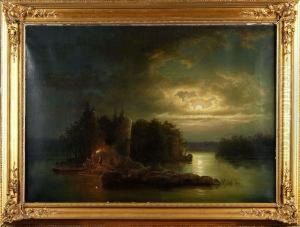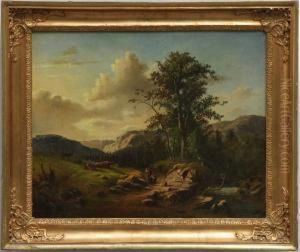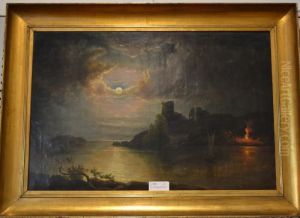Frans Johan Roselli Paintings
Frans Johan Roselli was a Swedish artist known primarily for his miniatures and portraits. Born in 1770, Roselli's early life and training are not extensively documented, but it is known that he was active during a period of significant artistic development in Sweden, which was influenced by broader European art movements of the late 18th and early 19th centuries.
Roselli likely received his artistic training in Sweden, although some sources suggest that he may have spent time studying abroad, as was common for many artists of his era to refine their skills and techniques. He worked at a time when portrait miniatures were highly popular, often commissioned by the nobility and wealthy patrons who desired portable and personal depictions of themselves and their loved ones.
Throughout his career, Roselli developed a reputation for his delicate and detailed miniatures. He was adept at capturing the likenesses and character of his subjects, often utilizing watercolors on ivory to achieve a luminous effect that was sought after in miniature portraiture. His works were characterized by fine brushwork and a strong sense of realism, which was a hallmark of the period's neoclassical style.
Roselli's contributions to Swedish art were part of the broader cultural landscape that included figures such as Alexander Roslin and Johan Tobias Sergel. Although perhaps not as widely recognized as some of his contemporaries, Roselli's miniatures represent an important facet of Swedish portraiture and the international taste for miniature painting during his time.
Frans Johan Roselli died in 1852, leaving behind a legacy of work that contributes to our understanding of the period's artistic practices and the cultural milieu of Sweden during the late 18th and early 19th centuries. His works are now considered valuable pieces for studying the period's portraiture and are held in various art collections, including those of Swedish museums and private collectors.


